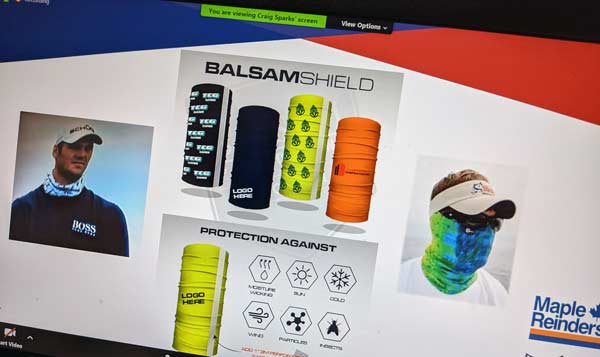A recent webinar presented by the League of Champions served as a showcase of the latest construction-sector health and safety protocols practised by Ontario’s leading contractors.
At the same time, organizers noted, the event reflected the contractors’ eagerness to demonstrate they are capable of working safely once the sector gets back to full operation.
The webinar was held April 23 via Zoom and represented the League’s first public presentation as an incorporated body distinct from, but still supported by, the Ontario General Contractors Association (OGCA). Strong links remain — Craig Lesurf of Gillam Group chairs both the OGCA Safety Committee and the League of Champions steering committee and OGCA director of government relations David Frame remains a League administrator.
“The League is here to help you with our shared best practices,” said Dan Fleming, NORCAT’s GTA manager and host of the webinar, addressing the 85 or so online participants. “If we all work together we will all get through this together and everybody will be back working safely and productively.”
Frame mentioned a hoped-for timeline in his remarks to viewers.
“It’s our full hope in the next couple of weeks to have our construction sites up and operating. That means the demand on health and safety is going to be much greater,” he said.
Presentations by Michael Mancini of Matheson Constructors, Bruno Alves of Stuart Olson, Corey Lofft of Pomerleau, Craig Sparks of Maple Reinders and Sobi Ragunathan of 4S illustrated how in less than two months constructors have risen to the challenges created by the pandemic to create sophisticated new screening methods, training modules, language, tasks, staff positions, documents, software, website portals and an array of new worksite procedures.
The workday now starts before workers hit the jobsites, Mancini said, as all employees are asked to complete daily forms online based on Ontario’s new self-assessment tool. There is also verbal screening onsite before employees are allowed to start work.

Besides the obvious health and safety reasons, Mancini explained, the information helps with Ministry of Labour tracking requirements, creates a database for the company and instils confidence in workers that they are safe.
Matheson uses self-customized spreadsheets, charts and graphs created by Google and Microsoft.
“We have had no refusals so far,” he said of worker buy-in. “Everyone is understanding.”
Alves, speaking on physical distancing, explained how contractors are constantly seeking to identify the latest protocols and fitting them into existing requirements. For example, while the COVID-19 crisis is unprecedented, Ontario’s Occupational Health and Safety Act has always required employers to comply with standards limiting employee exposure to biological, chemical or physical agents.
Stuart Olson and others are implementing guidelines contained in the Canadian Standards Association’s Standardized Protocols for All Canadian Construction Sites.
Contractors should go through the established prevention hierarchy for jobsite hazards, Alves said, attempting elimination, substitution, engineering controls, administrative controls and personal protective equipment (PPE). The basic rule is, if distancing is not possible, use of PPE is ramped up.
Sparks of Maple Reinders discussed his firm’s decision to require thermal imaging as a condition of site access. Maple Reinders created a Specific Thermal Screening Procedure to implement the program, including consent forms, procedures for Thermal Scanning Areas, and designating and training operators.
Participants in the webinar noted there are varying legal opinions on thermal screening, with unions questioning whether workers’ rights are being violated. Sparks said Maple Reinders has not yet encountered resistance among its employees.
Lofft, speaking on dealing with subcontractors, said Pomerleau has created a spirit of collaboration with subs through its Committed Contractor Initiative (CCI). The program was created by the firm’s Emergency Response Team and is part of Pomerleau’s Pandemic Response Plan.
The CCI, he explained, includes standards and principles to be followed by everyone on a jobsite and is intended to ensure all contractors and trades onsite share in Pomerleau’s commitment to health and safety, “working together to protect each other.”
The response plan is being updated regularly, Lofft said, with the latest iteration delivered April 17.
The feedback from peers and trades to the measures has been highly positive, Lofft said. And, he added, “We have had multiple visits from authorities and no orders yet, thankfully.”











Recent Comments
comments for this post are closed